Abstract
1. Tested against the spontaneous tone of guinea-pig isolated trachealis, cromakalim (0.1-100 microM), isoprenaline (1 nM-1 microM) and theophylline (1 microM-1 mM) each produced concentration-dependent relaxation. 2. Glibenclamide (0.1-10 microM) did not itself alter the spontaneous tone of the trachea nor did it modify the relaxant actions of isoprenaline or theophylline. In contrast, glibenclamide (0.1 and 1 microM) caused a concentration-dependent rightward shift of the log concentration-effect curve of cromakalim. Glibenclamide (10 microM) reduced the slope of the log concentration-effect curve of cromakalim and moved the foot of the curve back towards the control position. 3. Phentolamine (1, 10 and 100 microm) did not itself alter the spontaneous tone of the trachea nor did it modify the relaxant actions of isoprenaline or theophylline. In contrast phentolamine caused concentration-dependent depression of the log concentration-effect curve of cromakalim. 4. Neither prazosin (1 microM) nor yohimbine (10 microM) modified the spontaneous tone of the trachea. Prazosin and yohimbine each failed to antagonise the effects of cromakalim, isoprenaline and theophylline. 5. Intracellular electrophysiological recording showed that glibenclamide (1 microM) and phentolamine (100 microM) caused minor change in the resting membrane potential of trachealis cells. Slow wave activity was slightly depressed by these agents. In contrast tetraethylammonium (TEA; 8 mM) caused marked depolarisation, and promoted the conversion of slow waves into regenerative action potentials. These electrical changes were accompanied by tonic tension development. 6. Phentolamine (100 microM) and glibenclamide (1 microM) reduced and reversed both the relaxation and the hyperpolarisation induced by cromakalim (10 microM). 7. It is concluded that glibenclamide and phentolamine each provide selective antagonism of the relaxant action of cromakalim in guinea-pig trachealis. These agents also inhibit the plasmalemmal hyperpolarisation induced by cromakalim. The effect of phentolamine is unrelated to the blockade of alpha 1- or alpha 2-adrenoceptors. If either glibenclamide or phentolamine act to block the K+ channels opened by cromakalim, then such channels are not identical to those which endow the trachealis plasmalemma with its powerful rectifying behaviour.
Full text
PDF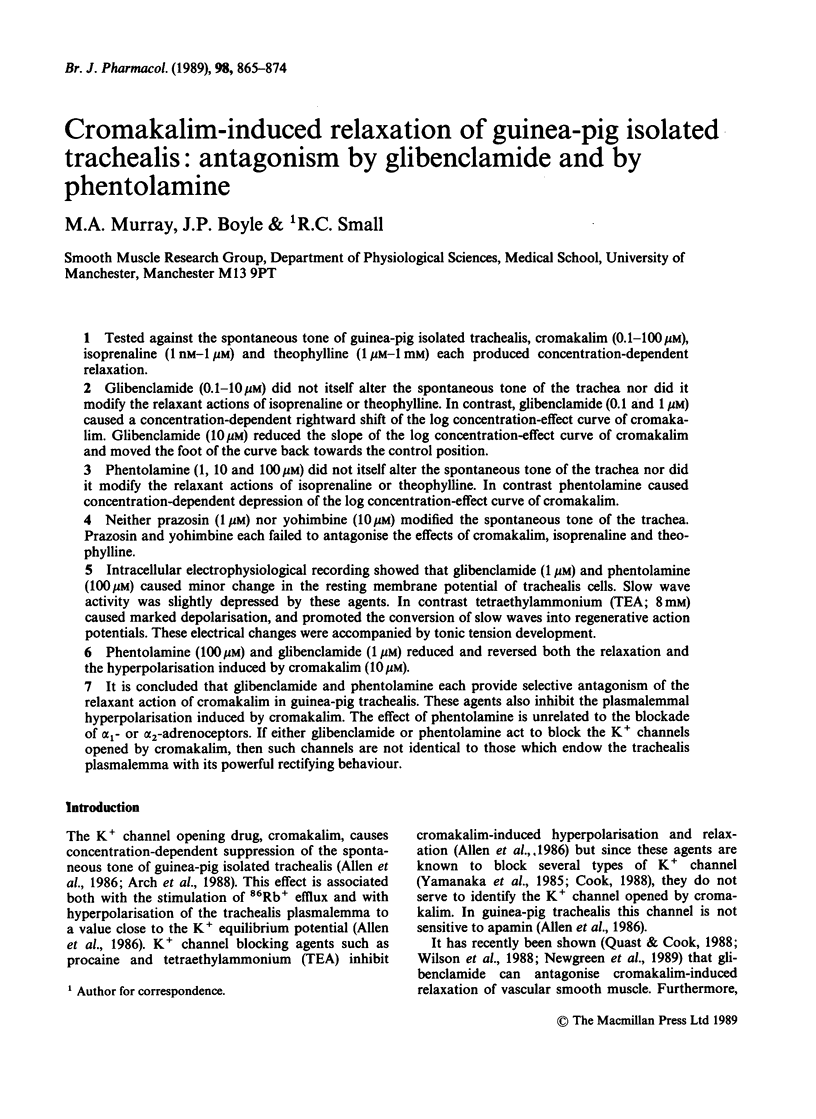
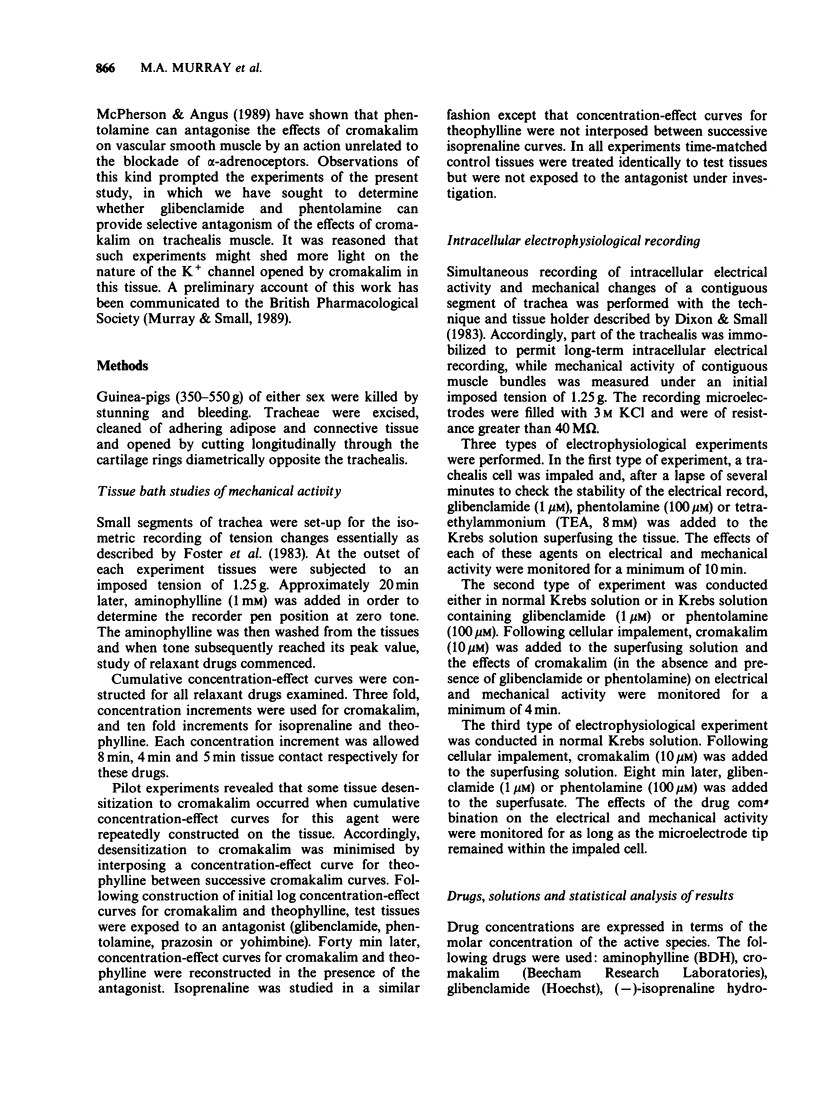
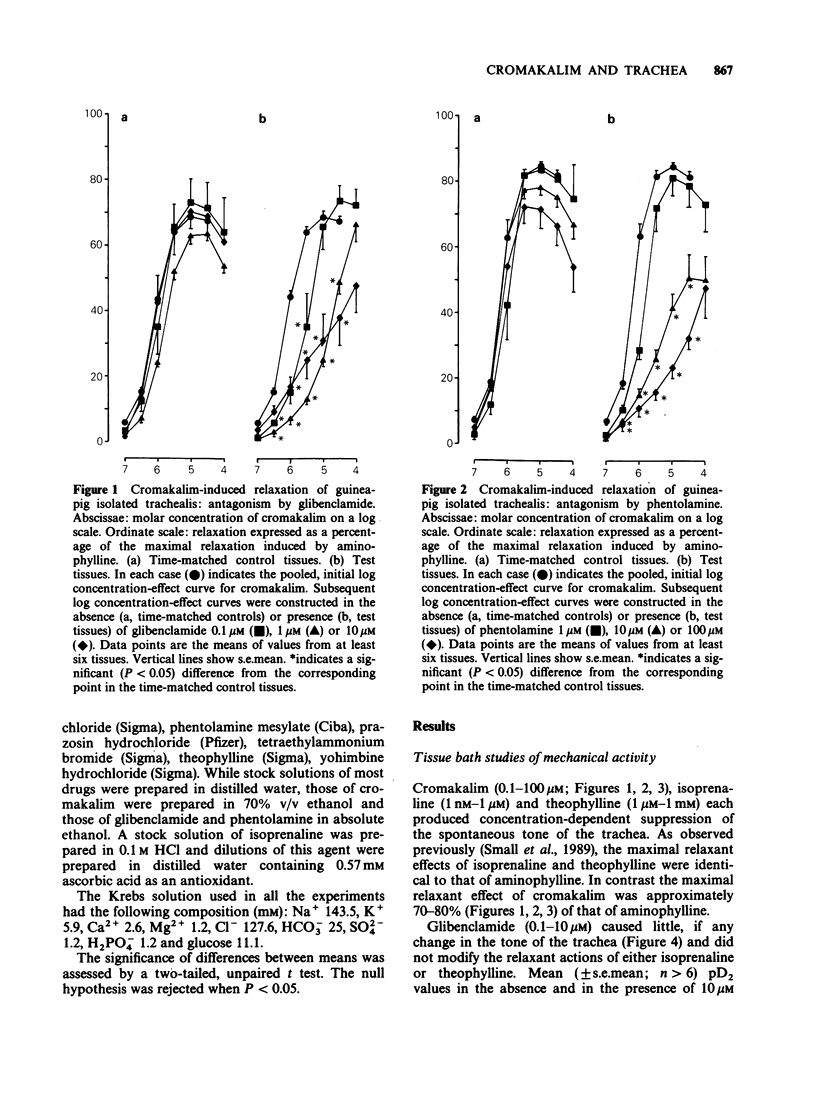
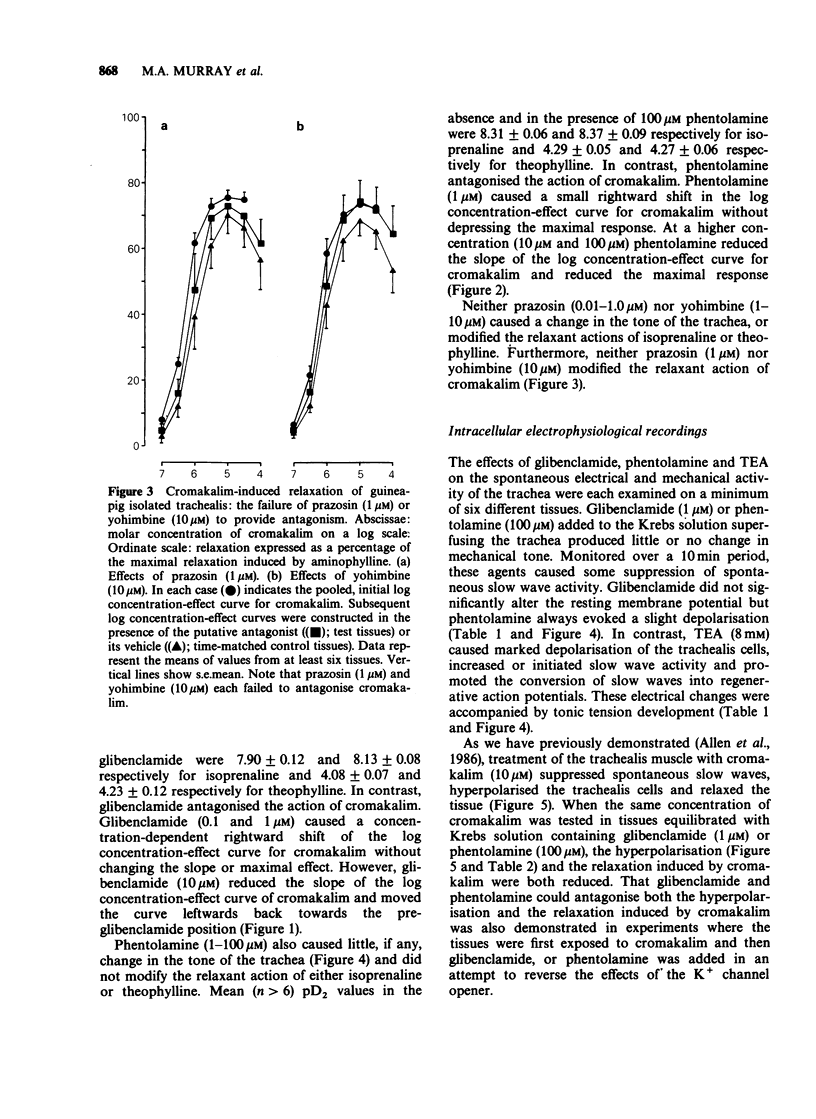
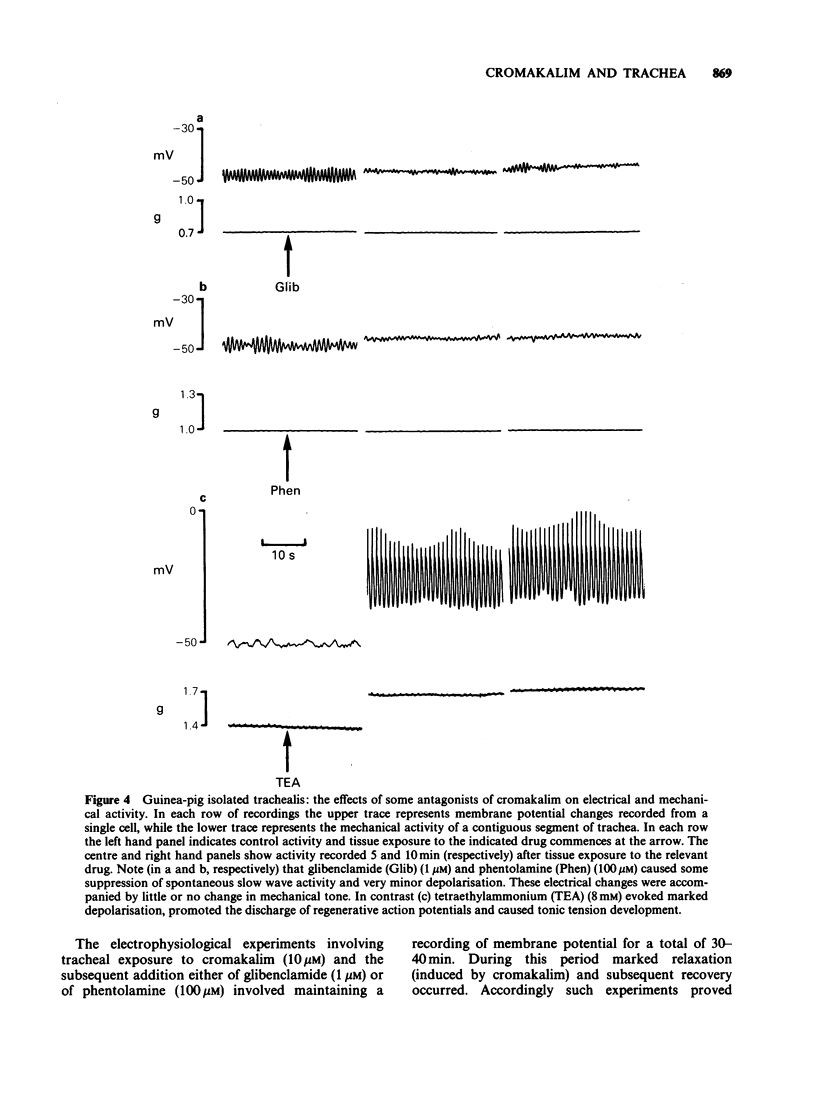
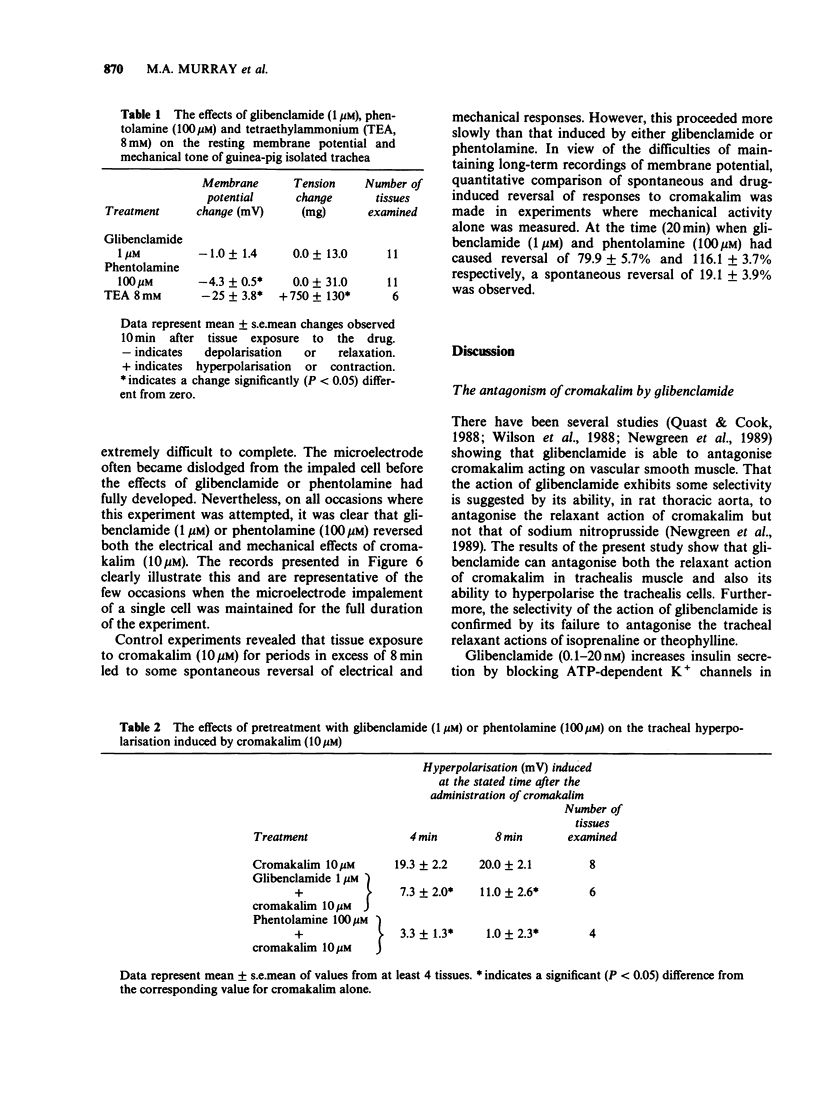
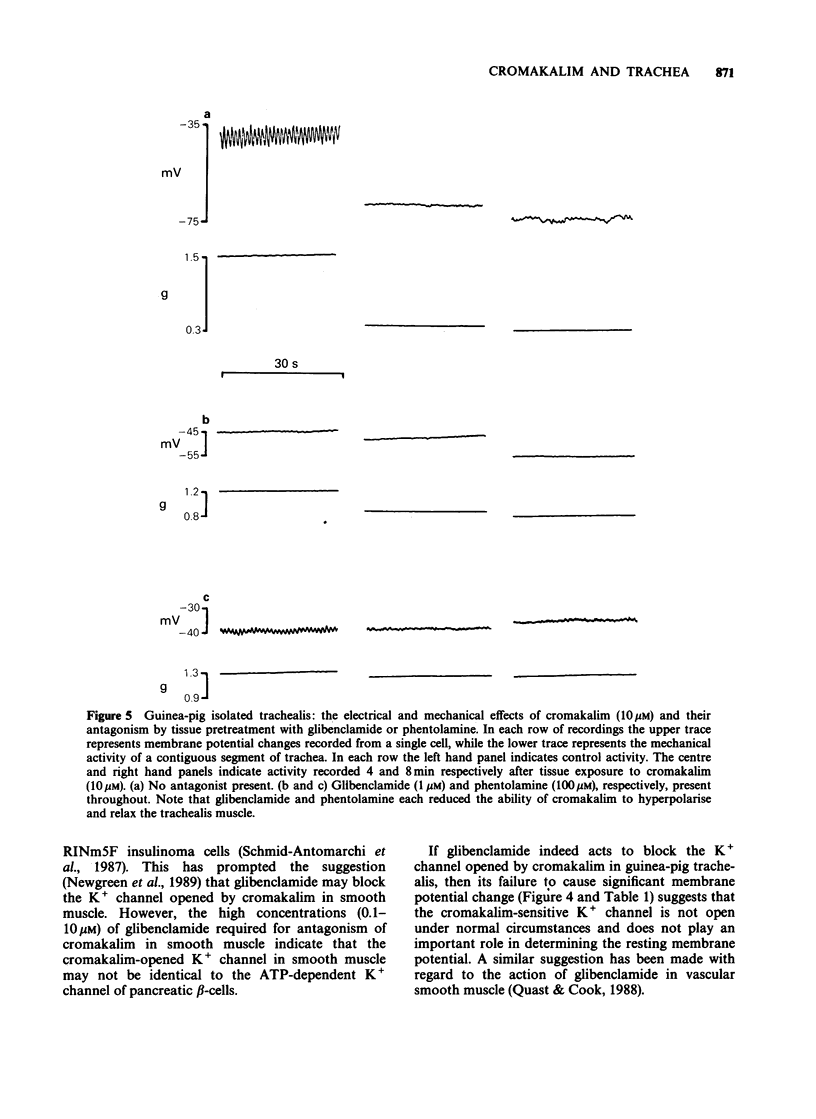
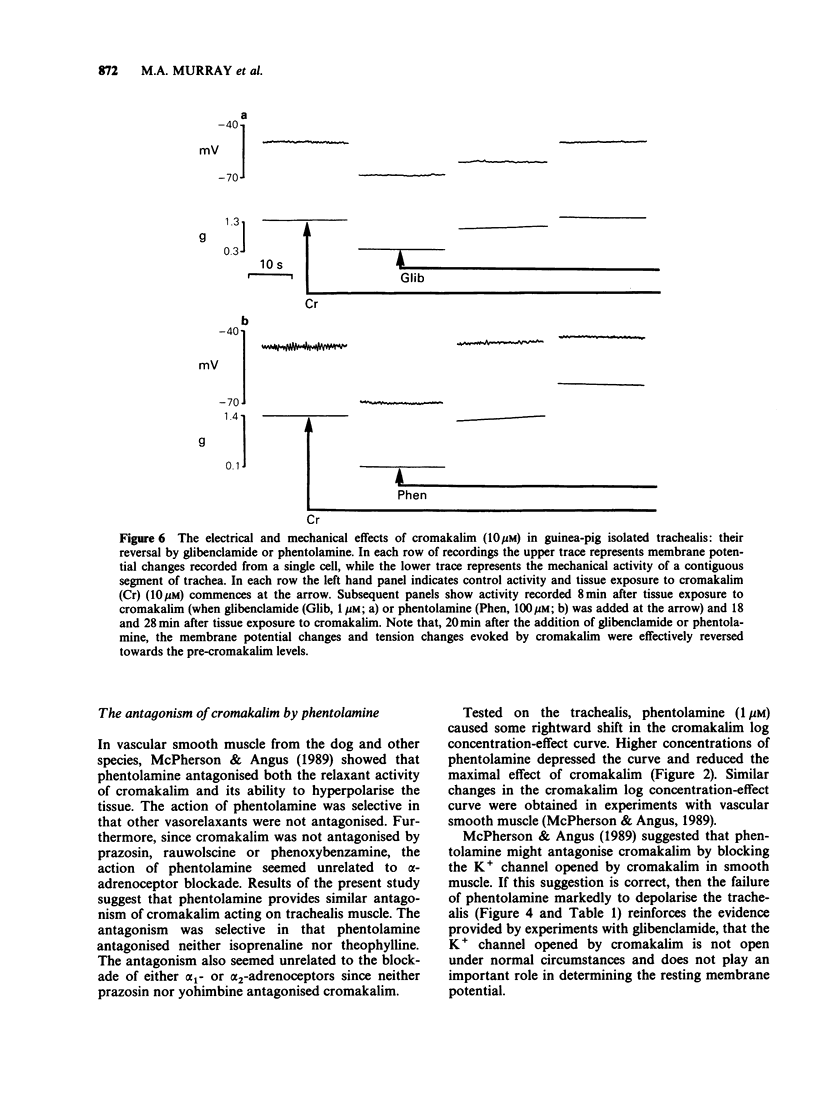
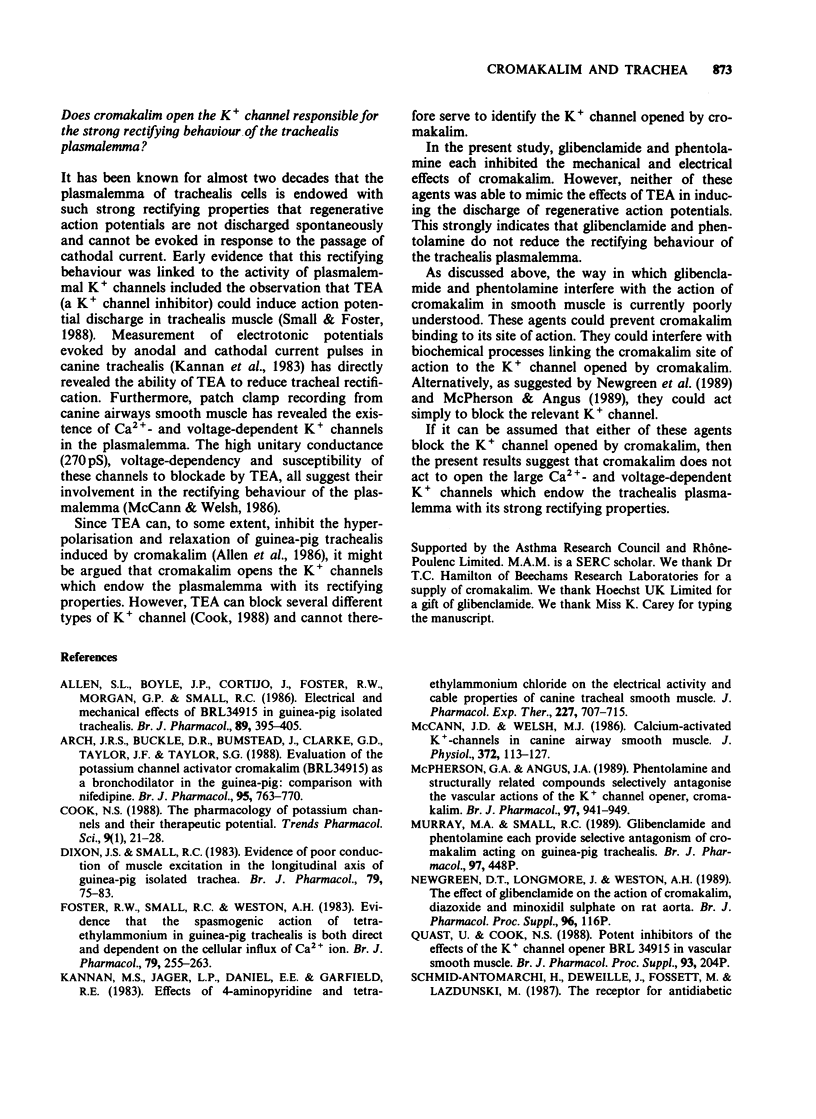
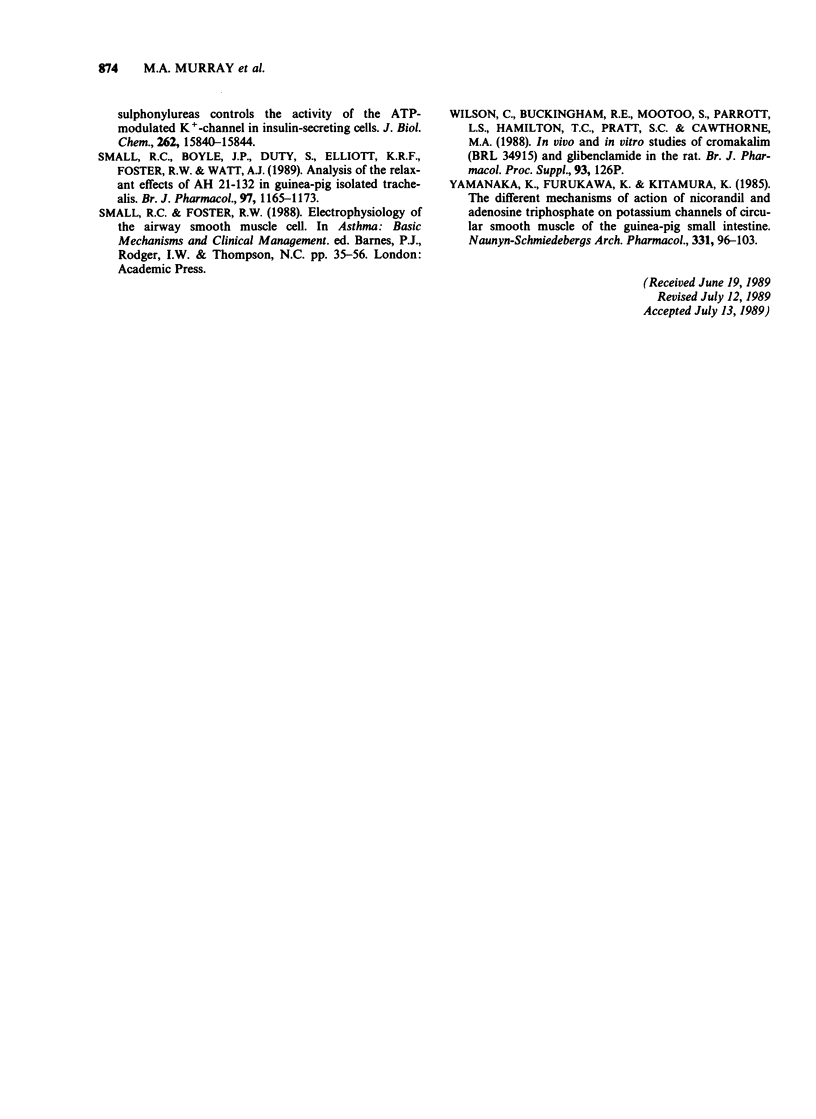
Selected References
These references are in PubMed. This may not be the complete list of references from this article.
- Allen S. L., Boyle J. P., Cortijo J., Foster R. W., Morgan G. P., Small R. C. Electrical and mechanical effects of BRL34915 in guinea-pig isolated trachealis. Br J Pharmacol. 1986 Oct;89(2):395–405. doi: 10.1111/j.1476-5381.1986.tb10273.x. [DOI] [PMC free article] [PubMed] [Google Scholar]
- Arch J. R., Buckle D. R., Bumstead J., Clarke G. D., Taylor J. F., Taylor S. G. Evaluation of the potassium channel activator cromakalim (BRL 34915) as a bronchodilator in the guinea-pig: comparison with nifedipine. Br J Pharmacol. 1988 Nov;95(3):763–770. doi: 10.1111/j.1476-5381.1988.tb11702.x. [DOI] [PMC free article] [PubMed] [Google Scholar]
- Cook N. S. The pharmacology of potassium channels and their therapeutic potential. Trends Pharmacol Sci. 1988 Jan;9(1):21–28. doi: 10.1016/0165-6147(88)90238-6. [DOI] [PubMed] [Google Scholar]
- Dixon J. S., Small R. C. Evidence of poor conduction of muscle excitation in the longitudinal axis of guinea-pig isolated trachea. Br J Pharmacol. 1983 May;79(1):75–83. doi: 10.1111/j.1476-5381.1983.tb10498.x. [DOI] [PMC free article] [PubMed] [Google Scholar]
- Foster R. W., Small R. C., Weston A. H. Evidence that the spasmogenic action of tetraethylammonium in guinea-pig trachealis is both direct and dependent on the cellular influx of calcium ion. Br J Pharmacol. 1983 May;79(1):255–263. doi: 10.1111/j.1476-5381.1983.tb10519.x. [DOI] [PMC free article] [PubMed] [Google Scholar]
- Kannan M. S., Jager L. P., Daniel E. E., Garfield R. E. Effects of 4-aminopyridine and tetraethylammonium chloride on the electrical activity and cable properties of canine tracheal smooth muscle. J Pharmacol Exp Ther. 1983 Dec;227(3):706–715. [PubMed] [Google Scholar]
- McCann J. D., Welsh M. J. Calcium-activated potassium channels in canine airway smooth muscle. J Physiol. 1986 Mar;372:113–127. doi: 10.1113/jphysiol.1986.sp016000. [DOI] [PMC free article] [PubMed] [Google Scholar]
- McPherson G. A., Angus J. A. Phentolamine and structurally related compounds selectively antagonize the vascular actions of the K+ channel opener, cromromakalim. Br J Pharmacol. 1989 Jul;97(3):941–949. doi: 10.1111/j.1476-5381.1989.tb12035.x. [DOI] [PMC free article] [PubMed] [Google Scholar]
- Schmid-Antomarchi H., De Weille J., Fosset M., Lazdunski M. The receptor for antidiabetic sulfonylureas controls the activity of the ATP-modulated K+ channel in insulin-secreting cells. J Biol Chem. 1987 Nov 25;262(33):15840–15844. [PubMed] [Google Scholar]
- Small R. C., Boyle J. P., Duty S., Elliott K. R., Foster R. W., Watt A. J. Analysis of the relaxant effects of AH 21-132 in guinea-pig isolated trachealis. Br J Pharmacol. 1989 Aug;97(4):1165–1173. doi: 10.1111/j.1476-5381.1989.tb12575.x. [DOI] [PMC free article] [PubMed] [Google Scholar]
- Yamanaka K., Furukawa K., Kitamura K. The different mechanisms of action of nicorandil and adenosine triphosphate on potassium channels of circular smooth muscle of the guinea-pig small intestine. Naunyn Schmiedebergs Arch Pharmacol. 1985 Oct;331(1):96–103. doi: 10.1007/BF00498857. [DOI] [PubMed] [Google Scholar]


